
|
Lorna Mills and Sally McKay
Digital Media Tree this blog's archive OVVLvverk Lorna Mills: Artworks / Persona Volare / contact Sally McKay: GIFS / cv and contact |
View current page
...more recent posts

Leonard Shlain, in his book Art and Physics, talks about Manet's choice to muck around with perspective, obscuring the vanishing point, curving the horizon line, eliminating the middle ground, and flattening the picture plane. According to Shlain, these innovations contributed to a message from the artworld, "warnings to the public that the Western paradigms [ie: Euclid] about space, time and light were about to change." Shlain's connections between art and science are a bit thin, based pretty much solely on chronology. But it is interesting to see these parallel histories on the same page. Besides, this chapter was an excuse to indulge in the somewhat guilty pleasure of looking/thinking again at paintings by Manet.
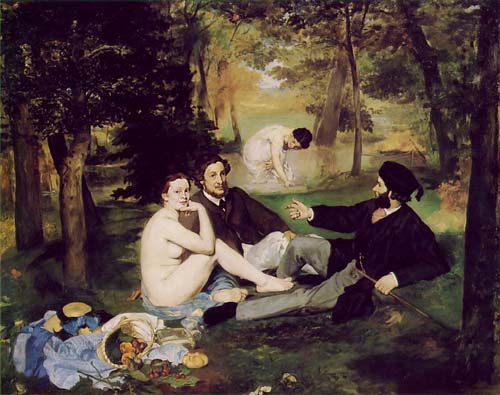
Édourard Manet, "Le Déjeuner sur l'herbe, " (1863)
(NB: bigger version moved to comments - scroll down)
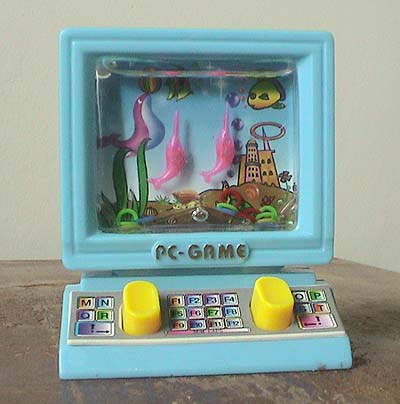
Just saw a new phrase for being '"a bit thick" that I like very much (thanks Jim):
not the sharpest tool in the shed
will make a change from my old standard:
not the brightest light on the tree
And then of course there's always:
not the shiniest marble in the bag
not the ...... ...... in the ......
anyone?
KissMachine • • • KissMachine • • • KissMachine• • • KissMachine• • • KissMachine
I have posted about Kiss Machine in the past. This little magazine is on the move. For instance, the new Babies and Robots issue has a spine! Perfect binding?! Criminey! But even more exciting are these personal highlights:
- Emily Pohl Weary surpasses herself in the ever-eloquent editorial. Excerpt: "Perhaps the only remaining refuge from high speed is birth and the awkwardness of life during our first few years. Before we gain fine motor control and an awareness of how to use things like keyboards, we're stuck in an altogether human reality."
- Jesse Hirsh spins a reality-based cyborg tale, culminating with an unsettling metaphor of the internet as the body for an unfortunately homogeneous new mind. Excerpt: "The evolution or transcendence of the human mind toward divinity is not a new or isolated concept. However, the field of artificial intelligence is perhaps the most meticulous, ambitious and widespread attempt at this goal that we have seen for some time. It is rivalled only by the religiosity of NASA and the space program."
- Tyler Clark Burke writes a ripping good mortality rant. Excerpt: "All the strangers are alive on the planet right now (which is cool, I mean rad, without being radical); everyone who is alive will be dead at the same time at one time, and then almost mid-sentence like right now I reminisce about all the best run-on sentences I've ever written, like someone is reading it and it is alive and so are they and, punctuation long-forgotten, I remember that we are social beings and we do share things like fantasies about the Unabomber and Henry Darger-dirges ..."
- I'm very grateful for the lucky accident that plopped me into the world during this particular junction of space/time because once in a while I get to read Paul Hong's writing. I have tried several times both in the past and this very evening to find a representative passage of Paul's work, but the writing is so tight and resonant that to pull one bit out is to do the whole a serious disservice. Just find the zine and read it.

The words below are from Dr. Maja Materic, computer scientist studying artificial intelligence, and Director of the Robotics Laboratories at the University of Southern California, quoted from the overly-styled millenial documentary Me and Isaac Newton by Michael Apten. Above images are stills from the film, depicting Materic, her child, and some of her robots.
There's always this worry on the part of some people that robots will take over the world. But robots will always be completely different from people because they've evolved in a completely different context. There's really no comparison. [...] We'll just have to make sure, as they become more complex, that we understand them well enough. The same way we have to understand any creatures. Nothing else is controllable today, not just robotics. Animals aren't controllable and yet we are not always threatened by their presence.
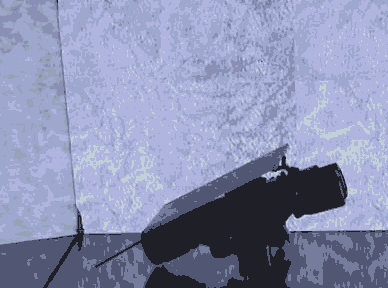
Tomorrow night I am talking on a panel about self-publishing (details here). In an effort to figure out what I think about self-publishing these days, I've been looking back over some old work. I used to disseminate simple, black and white, three-fold flyers as art projects. I decided to post the text and images below from one of my favourites, first made in 1996.
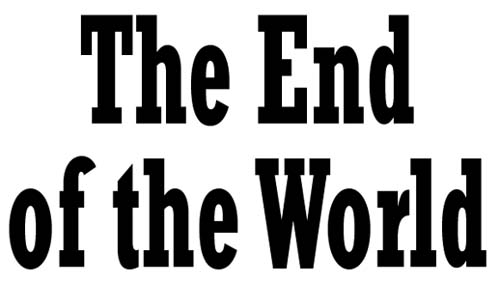

It was cold and it rained so I felt like an actor
– David Bowie, "Five Years"
The end of the world was thoroughly predictable and yet it surprised everyone. It was hot. The sun hung low in the sky, a huge dark ball of flame. There were massive earthquakes and people fell into great rifts that opened suddenly in the ground, slipping down into the flaming bowels of the planet. There was mass hysteria, sobbing, screaming and looting. The highways were clogged with cars. Loved ones clung to each other with wild fear in their eyes. Teenagers tried desperately to get home to their families. TV news announcers stayed, sobbing, at their posts until the electricity went dead, like captains going down with the ship. Mothers clutched children to their breasts and fathers stood by, paralysed with love, frustration, fear and rage. All this was expected.
What surprised everyone was that it only happened once. Adults were amazed to find that, along with everything else, they felt relieved. This was finally it. It was like the release you feel when your home-team, a non-functioning group of pathetic, disillusioned millionaire pro-athletes from other cities, gets eliminated from the playoffs and you don’t have to muster the energy to cheer for them any more. They just had to get through these next few hours and all those years of anxiety would finally be over.
Another surprise was that it wasn’t really all that bad. Each individual death was no more excruciating than being shot in the head during a liquor store hold-up, dying in a house fire, or being crushed under the wheels of a truck, all familiar events that had been happening to people for ever.
People looked about them blankly. They saw that it was the end of the world. There was fire, there was brimstone, four horsemen came clattering around the corner and whizzed by in a dramatic flurry of blowing capes and manes. It looked just like they’d imagined it would, and yet most people felt distracted from the the significance of the event. This wasn’t a story book disaster or a made-for-TV movie. Everyone had a million other pressing, specific details clamouring for their attention.
Another surprise was that no one survived. When it was all over, and the dust had finally settled, there was no lone soul left staggering through the rubble. No one woke from a terrible nightmare to find that it was all true – no one got to be the last one left alive on a ravaged planet. The place was truly deserted. The cockroach race continued, just like everyone thought they would, but they were insects who never had a concept of humanity to start with.
It was done now, and no one had really even seen it happen.

Tom Moody has a nice post today (with mp3s) on the recent Whitney Biennial performance by Cory Arcangel and Beige. Follow the link to Thickeye's review. These folks are doing some great music/tech/art stuff, "dirtstyle," both in performance and online.
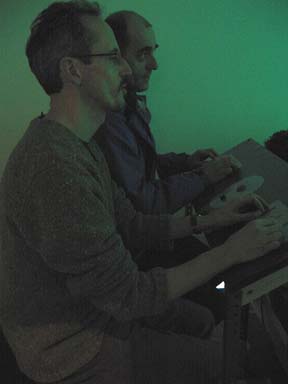
photo by Germaine Koh of weewerk (thanks G!)
You've read about Joe McKay's Colour Game, now you can play it (if you are in Toronto). This week only at weewerk!

photo by Bunnie (me making a save, J
"Sirens intended to warn Pickering residents of a safety risk at the nearby nuclear plant are gathering dust in a warehouse after local politicians refused to install them, calling them Cold War "monstrosities" and a threat to property values." Toronto Star Mar. 3, 2004.
Pickering is a suburb with a great big nuclear power plant on the eastern side of Toronto. This has been quite the hilarious hullaballoo. How about those rusty old reactors bringing down property values? Well they're behind the nice burm, you see, no problem. My friend B. Smiley suggests a design for the sirens: elegant curved poles that bend down to the ground so that the siren itself can be aesthetically buried (muffled, if you will) in a pile of sand.
The Star article has dropped offline, but you can read it here, on the riderfans.com forum (for those of you south of the 49th, Canadian football fans can be scary too). This guy David W. cites the story as an example of civilian foolishness. His surreal quote: "And you wonder why the military is falling apart in this country - and will continue to do so? 'cause Canadians talk a good preparedness story but when push comes to shove they only think of themselves."
Now that Arnie has been in office for long enough that the horror has worn off, I recently felt capable of somewhat enjoying Terminator 3. My friends and I laughed pretty hard during the big car chase scene, when the terminatrix is in a giant utility truck, swinging Arnold around on the end of a hook. Things get boring, however, as the show goes on. The dialogue is mostly lame recycled jokes and the acting is middling to poor. They really drag out the plot and I must confess that humanoid-shaped cyborgs just ain't where its at right now. I'm no expert, but I think they are testing out nanotech on scarier stuff than melty chrome. Here's my (least) favourite part, the impactful, overserious voice-over narration at the end: "I finally realised that my destiny all along was not to stop the planet from nuclear destruction, but to survive it." Niiiice. Him and his pretty future wife with their future kids swimming around in their gonads, all locked up together nice and safe in an empty presidential bunker. Time to go check on my trip-wire mine field, barbed-wire fence, and stockpiles of bottled water, plastic sheets and duct tape.
Populist mathematician John Mighton (who wrote a book called The Myth of Ability) on Wittgenstein:
Wittgenstein initially believed that philosophy, like mathematics, could be reduced to logic. He felt that everyday language was too vague for philosophy. He inspired other philosophers to create artificial languages so you could talk about things precisely. From an old profile in Saturday Night Magazine
Laparoscopic surgeon and writer of odd-ball, award winning books, Leonard Shlain on the alphabet:
When beaded together on a horizontal line in a particular sequence these symbols became a decipherable code and made commonplace the ability to record and transfer information with relative ease.
An ideogram or hieroglyph is basically a picture that may contain multiple concepts all superimposed upon one another. The alphabet, on the other hand, strings out these concepts so that they become words in a sentence whose meaning depends on their linear sequence. Untangling the multiple ideas coiled within an ideographic image and converting them to linear code reinforces the belief that one thing follows another, and thus ever so surreptitiously alphabets impose causality upon the thinking process of those who use them. From Shlain's awkward, interesting book, Art and Physics
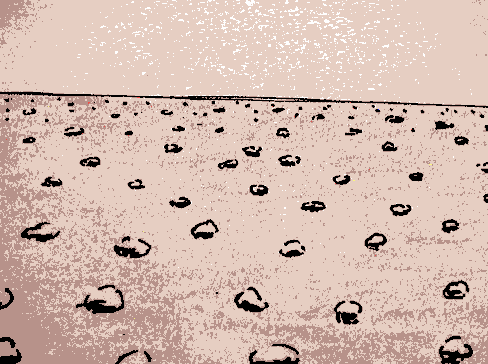
The Cultural Gutter by Guy Leshinski, Jim Munroe, and James Schellenberg is new, blogstyle and fun. Here's a good quote about computer games (and tap water) by JM:
"In the move from the arcade to the basement, we've lost more than bragging rights. The seedy-cool image of hanging out at the arcade -- which perhaps jump-started the gaming industry -- was traded in for a bland suburban model. Like a lot of shifts from the public to the private, the convenience and control we've gained is at the expense of certain intangibles. While hardly as ominous or significant a trend as bottled water undermining our public water system, these social shifts are both largely instigated by marketing pushes."
Touching the Void (SPOILERS): This is a documentary about mountain climbers Joe Simpson and Simon Yates. Lot's of things go wrong, and at one point Simon is forced to cut the rope, dropping the dangling Joe off the edge of a cliff. The big question of the movie: why does this guy stay alive? My favourite part is when the rope has been cut, and Simpson has fallen partway into the crevasse. He is sitting at the top of an open, gaping, black void. Rather than spend the next 4 days sitting there slowly dying, he decides to lower himself into the blackness. How great is that!? Down he goes, and sure enough there is a way out once he gets to the bottom. It's much too symbolically tidy to actually be a true story! Which brings me to the other thing I liked about the film...its very well crafted narrative. The re-enactments by the actor/climbers were sewn in tightly with the voice-over of the real climbers - there was no duplication of information, and a seamless emotional tone. I became aware of the fact that this story has been told many many times. The guys themselves must be constructing it in their memories, and the book, the lecture circuit, the film, all help to mold into its current, iconic shape.
Kevin Macdonald made the movie. As it went on, it became more mannered. Normally I'd be uncomfortable with that (as with Erroll Morris and his slo-mo coffee cups) but in this case it worked out just fine. I loved the final scenes where Simpson is losing his mind and can't get Boney M out of his head. The film and audio became fragmented, broken and chaotic and it was great. Another powerful visual moment was the closeup of his mouth sucking water from the rock. Sex, death, human in an environment where he does not belong. Sucking up a small muddly water puddle like he was going down on pussy.
One night towards the end he is lying on his back staring up at the stars. He begins to feel as if he has been there for millenia, as if he is part of the rock.
You could tell instantly from their faces which guy (Simon Yates) had cut the rope (and never forgiven himself), and which (Joe Simpson) had miraculously survived (and forgiven his friend for cutting the rope). Simon had darkness in his face and Joe had light (too perky by half).
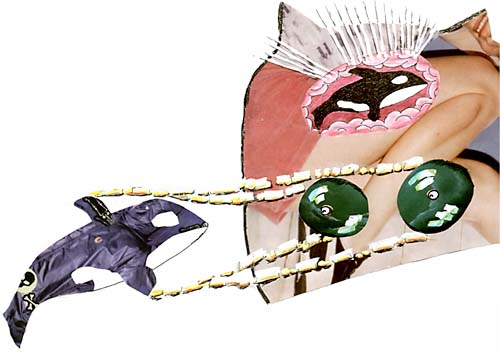
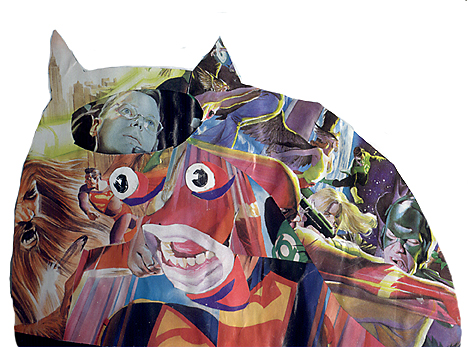
Curator and international art collector Ydessa Hendeles is blowing me away these days. The quotes below are from a CBC broadcast of her presentation at Making History, a recent symposium in Toronto about Canadian art and its role on the international stage. I put up an mp3 of the broacast here. (Thanks for the recording, J!)
It is not only possible, but critical for Canadians to build relationships with artists and curators outside our national borders. It is the nature of expression to have urgency, and seek out as large an audience as possible. [...] I don't mean that artists should look for their audience in a careerist, strategic way. [...] Relationships work best when works are authentic expressions that are not made for strategic purposes of capitalising on already existing subjects of discourse.
[...] Museums in each country should not all have the same art in them.
[...] Some collecting museums, to resolve the issue of timeliness, have resorted to showing prominent private collections. But this has recently backfired. Indeed, the collecting museum's authority can easily be corrupted by the marketplace. For example, the display of the Saatchi collection of the show Sensation resulted in a scandal at the Brooklyn museum. [...] The persistent controversial issue is the commerical gain later won by the collector, as his works were subsequently put up for sale and made huge profits. The trustees of the Museum of Modern Art and Tate Gallery, both major collecting museums, responded by taking the position that they will not show a private collector's art collection. [...] Like the separation of church and state, there is, and should be, a boundary between commerce and art. Neither a collector, nor a corporation should be able to capitalize financially from the sale of a collection that comes directly from being promoted by a public museum.
 Image by Michael Breslin of the UofT Varsity, taken from here |
The death of activist Tooker Gomberg is a huge loss. His inspirational drive, imagination, and natural leadership accomplished a great deal for environmental activism and social justice. The shallow coverage in today's Globe and Mail is indicative of the fact that Gomberg knew how to get under the mainstream media's skin. Tooker was all justice all the time, and his media "stunts" raised awarness about poverty, smog, cycling, and political representation, as well as massively important global environmental issues. He will be badly missed. |
In a current spate of A-bomb research, I watched both Dr. Strangelove and a documentary called Atomic Filmmakers, Behind the Scenes.
Dr. Strangelove is an irksome film. When I first saw it I was too young and too scared of the bomb to get the humour. This time I did not find myself laughing either, but at least I saw it as subversive rather than oppressive. When I was a child I wondered, "How could this be?" and I guess I still kind of wonder the same thing. I like the chilling P.O.V. shots on the ground when General Jack T. Ripper's stockaded base is invaded (on orders from the president) by a neighbouring military unit. Americans, shot by Americans, lie dying on the dusty ground. The footage reminds me of Kent State, and also the part in Catch-22 when Milo Minderbinder strafes his own base as part of some black market deal he made for 'the syndicate" (because what's good for the syndicate is good for us all). There are similarities to Catch-22 but the humour here is much colder and less humanistic. It's a different kind of war, I guess. Still, it's interesting that the technology (big knobs and switches on the airplane consoles, survival kits and bomber jackets, etc.) of Dr. Strangelove looks much more like WW II than like our present day remote control death networks. I am pretty sure that the overabundance of chewing gum in the film was hyper-ironic reference to a nostalgia for a more individualistic, Johnny-get-your-gun, kind of war.
The Atomic Filmmakers doc (1997) was about a bunch of guys who documented the A-bomb tests in Nevada and at Bikini Atoll. The film was highly unsubversive, the interviews were conducted passively, and the tone was true to the ethos of the era: there's a decent, American job to be done here: heck, them-there A-bombs ain't gonna document themselves!
One good anecdote was from a guy who sat with his cameras in the nose (gunner-bay, I guess) of a plane that followed the plane that dropped a bomb, so he was right above the blast when it went off. He had goggles to shield his eyes but they broke as he was pulling them on. He (in a state of panic, sure he'd go blind) put his hands across his tightly closed eyes. He didn't go blind, but he did see the bones of his fingers in the flash.
There was a whole secret film lab called Lookout Mountain. These guys documented everything: they made 6500 films! One them had an aunt and uncle killed at Nagasaki. He said they lived in the country and made the "unfortunate" decision to go into the city to market that day. He said that in one of the Nevada tests he filmed, pigs and monkeys were tied up in the bomb area with their eyes propped (what-the? Like in Clockwork Orange? whY? ) open. He said that made him think "This is how it would be for people who had a bomb dropped on them."
The film ended with a montage of incredibly magnificent footage of big blasts and mushroom clouds. I stared at the TV screen trying to understand what I was seeing, but it just kept looking like really nice pictures.
Yesterday, Jennifer McMackon's new blog, simpleposie, asked the question: "Who is your favourite artist?" I responded with the following: 1. Michael Balser, 2. Kristin Lucas, 3. Anne McGuire, 4. Andrew J. Paterson (listed here in alphabetical order). This list interests me in that it popped out easily, and the artists all have a lot in common: video, performance, and a playful-yet-dire, articulate approach to the languages of technology and media.
1. Michael Balser: A Canadian video artist, dead and sorely missed, whose work is full of wit, pop culture, on-the-edge-big-science, petty art world gossip and debate, science fiction, low-fi cable tv production, high-end broadcast quality tv production, and rattle-your-bones mortality woven in so tight together that you can't pull out any of the threads. (You can easily find Balser's titles here in V Tape's excellent catalogue.
Excerpt below from the beginning of Michael Balser's "2014. An odd essay ", published in Lola #3, 1998.
2. Kristin Lucas: A brilliant video, web, and performance artist who is not a cyberfeminist simply because there is nothing predictable, and barely anything explicable, about this woman's work. I love and respect the courage she has to put resources into her own surprising imagery, rather than fulfilling narrative or dogmatic expectations.Xanax, Zerit and Indinovir stood poised at the edge of intergalactic eternity, their enlarged crania jutting forward like three eliptical crixivans, collectively forming an image of magnetic resonance."Do you think this will work as animation or should we use live action with digital spaceships and shit?" Dave Bergmark was hunched over his GatesPowerMac 196000 super-computer (20,000 terabyte and 64,000 megahertz).
"Where do we deposit the testicular repligene?"
"Xanax has replaced the modular neopostplastic smegma simulator in the psychotomax."
Their crypto-pharmacologica-tech-talk was interrupted by the familiar sound of webmusak at 600 beats per minute, so fast that only Zerit, with his huge aural endowment, could detect the vibrations and react appropriately. He began the Dance of the Zadivudine Genomes. Very soon, mutant Transcriptors were appearing from the transparent, multifaceted, rotating trhee dimensional CoprLogos which filled the infinite space that the three superheros had previously occupied.
"We need more fucking memory," he screamed, pounding his fist onto the keyboard, doing more damage than good, I suspect ... (hmm ... I also suspect that he would not have a keyboard. Note ... think of a ridiculous post-space-age substitute for keyboard. Maybe a genetically controlled wand of some sort with a corporate name that sounds like a mood altering drug -- World Weary Wastetime presents the Wazax Wand 3000).
NB: if you want to read the rest of this most excellent article, contact me here and I'll try to figure out what to do about it.
Excerpts below from "My First Person is Tired of Shooting" a somewhat dated attempt at written dialogue-with-artwork that I produced for the catalogue of Kristin Lucas's show Temporary Housing for the Despondent Citizen at the OK Centre for Contemporary Art in Upper Austria, 2000.
The [surveillance] video picked up information about the money. Microscopic elements travelled back and forth between Nora's hands and the money all day long.There is good writing by Tom Moody about some of Kristin Lucas's more recent artwork here.
Please tell me a story. To hear something you have to say something. The foodcourt is like a TV show with no beginning middle or end. It's on all the channels all the time. At the airport the carpet is grey. You can lie down on it to sleep and people will walk around you as if you weren't even there. Say something. Trash talks.
Lawrence Weiner put a stick in a stream. But it was just an idea.
My first person is tired of shooting. I need better ammo. I need to find something and pick it up. I need something better to carry around with me.
I'm breaking up. I am here and here. You can have me. I am dissolving. It's all in your hands. You are dissolving. Quick find a peg, and another, and another.
The sunlight is very very bright and it is getting brighter. Things are getting lost in the lights and in the darks. We are losing information at the far ends of the scale.
3. Anne McGuire: I love this woman's work for its lowbudget yet whole-hearted dedication to a trope. It seems like bad theatre and maybe it is. There's a use of amateur actors that makes no apologies for its clunky style, yet dives into the language of representation with supreme confidence. It's irony and straight-ahead narrative fused together in a compact, somewhat painful, package.
McGuire's "I'm Crazy, You're Not Wrong" both broke me up and broke my heart. This flowsy-frumpy, wig-bearing bombshell perches, with much lady-like, druken lurching, on a high stool and carefully , tenderly, imparts to us her madness and complete abdication of agency in a sad-sack, crazy-ass torch song that seems as if she is making it up as she goes along. I was sold in an instant.
I very recently found out that Anne McGuire also did a backwards version of my nearly very favourite film ever, Andromeda Strain. There's normally a nice blurb here at Video Data Bank, but tonight the search function seems to be down. Check back later, either there or here.
4. Andrew J. Paterson: A brilliant Canadian performance and video artist whose cellular structure is coded for centre stage, yet who is at the same time both generous and keenly political. Click this for an earlier review on this blog of Paterson's recent Pleasuredome performance.
Excerpts below from a piece of ficto-criticism (time for a new term) that I wrote in response to Andrew J. Paterson's 2001 video, "Snowjob" for the catalogue to Pleasuredome's video curation Blueprint: moving images in the 21st century:
If Money were a space alien that took over the planet Earth, I would be one of its worker drones. To Money I would not be a person. I would be an Unidentified Animate Object. That wouldn't leave me many options, would it? But Money does not come from outer space.
Digimon are like cute, tiny money, and we kids are like their tiny worker drones. If Digimon were space aliens that took over the planet Earth, we would be their Unidentified Animate Objects -- slaves to the Digimon! But Digimon do not come from outer space.
So if Money does not come from outer space, and Digimon do not come from outer space (and neither do GAP, Imperial Oil, and the art market), how come we are all employed at pushing these things around from here to there? Maybe we are Money. We are Digimon. We are GAP and we are Imperial Oil and we are the art market. We make these things, and we make pictures of these things and show them to one another, in order that we may continue to make all of it some more.
"pictures r words r pictures r words r pictures r words r pictures r words ..." I'm losing track. I don't know where to go from here. I think its a snowjob.
Whoo-hoo! Art-blogger Tyler Green has visited Toronto and deemed, thanks to a show the AGO (Art Gallery of Ontario), of all places, that "Canadians are not prudes." Read all about it here.
The Monday Report, CBC's somewhat lacklustre answer to The Daily Show, nevertheless had a great spot today spoofing those sanctimonious 'no pirating' ads with average guys who work in the movie business going on about their down-to-earth jobs. Unfortunately it's not on the website. Some of the best lines:
Charlie Nesman makes bad movies.
"I make a lot of sequels."
"What kind of movies do I like? I like a movie about...a monkey...that gets special powers...and has to play a sport. That's the kind of movie I like."
"I don't know why anyone would steal a movie...unless its to avoid listening to this ad that you have to see before every single movie, and you've just paid 11 dollars and then you still have to sit and listen to me whining and telling you you're a thief, nevermind the 9 dollars you just spent on popcorn."

I don't understand why people aren't madly raving about Splinter Cell the way they did about Tomb Raider (okay there's less boobs, but is that really so important to the game?). The environments are various and interesting, the graphics are gorgeous and the gameplay is smooth and engaging. The avatar is blank enough for ease of identification, yet sexy and sleek and he moves with a nice awkward grace. When I started the level on the oil rig, the place (graphic above) took my breath away. The blowing clouds, the ominous thick black water, the moon and stars, the oil rig itself in the distance. I spent quite awhile wandering around just looking, not quite ready yet to throw myself into the action. In a similar game moment, my friend Jim Munroe told me that he often playes Grand Theft Auto just wandering around looking at stuff. I knew he did this as a video project, but didn't understand why he would stray from the tasks of the game while playing on his own. Then the other day I was in the middle of a GTA mission down by the waterfront and I noticed how nice the sky was looking. So I stopped what I was doing to watch the sunrise. It looked damn pretty, a glowing ball rising over the water, the sky turning soft shades of pink and blue, and it was well worth taking the time out. These experiences of great rendering are much more complete and intense than I ever expected in my lifetime. It's disconcerting, for an old gal like me, to find my relaxed, internal thoughts straying towards such constructed, visual environments.